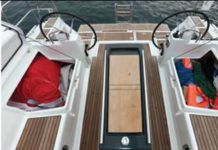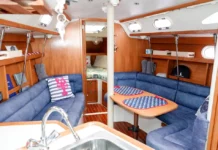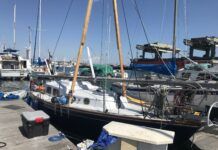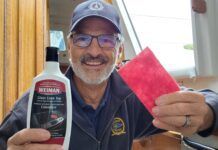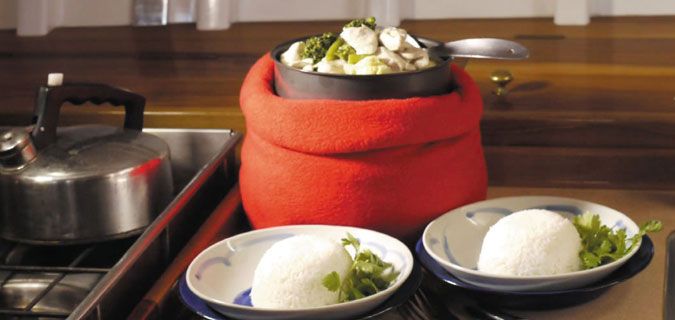Staples of the modern home kitchen, Crock-Pots and rice cookers are time-savers, enabling chefs to prepare long-cooking meals without tending the stove for hours. But there’s another way to slow-cook foods, one that’s easily portable and doesn’t require a constant electrical source: retained-heat cooking.
Retained-heat (thermal) cooking is the practice of heating a pot to boiling, simmering for just a few minutes, and then placing the pot in a well-insulated container to finish cooking with the heat the pot and contents already have. Thermal cooking is great for cooking stews, casseroles, soups, desserts, and other dishes. Not only do thermal cookers save on cooking fuel or electricity and time, they also make it possible to cook underway without constant stove tending (so long as the cookers are properly secured), which is great for short-handed crews, and the reduced stovetop-cooking time means the cabin isn’t turned into a sauna. Cooking with retained heat also means you can prep a meal before getting underway, leave it to cook while sailing, and then enjoy it later—either once the anchor is dropped or when the night watch begins. You can also prep a meal and leave to explore town without concern about an untended flame or burned meal.
For retained-heat cooking, the container can be as simple as a box packed with straw—common on sailing ships of old and in 19th- and early 20th-century kitchens—or something more modern. Many designs have been introduced: insulated fabric bags, a basket lined with fleece blankets, plastic devices similar to drink coolers, and stainless-steel, vacuum-insulated pots. We decided to give a few devices—commercial fabric bags, vacuum-
insulated containers, and homemade setups using common household gear—a try to see which of the energy-saving, timesaving designs is the best option for galley service.
For more cooking aboard, purchase Stoves, Ovens and Grills from Practical Sailor.



